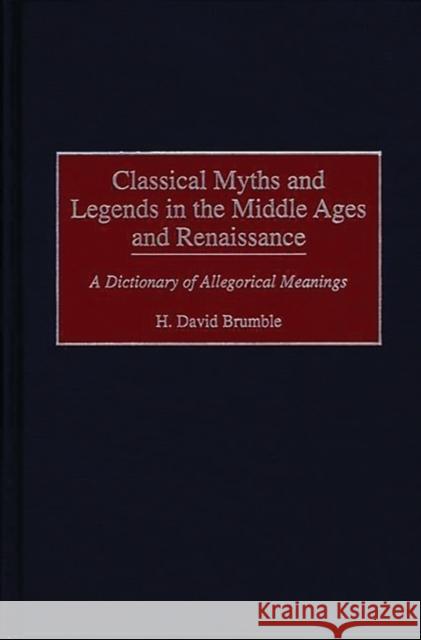Classical Myths and Legends in the Middle Ages and Renaissance: A Dictionary of Allegorical Meanings » książka
Classical Myths and Legends in the Middle Ages and Renaissance: A Dictionary of Allegorical Meanings
ISBN-13: 9780313294518 / Angielski / Twarda / 1998 / 480 str.
Classical Myths and Legends in the Middle Ages and Renaissance: A Dictionary of Allegorical Meanings
ISBN-13: 9780313294518 / Angielski / Twarda / 1998 / 480 str.
(netto: 311,68 VAT: 5%)
Najniższa cena z 30 dni: 325,25
ok. 30 dni roboczych
Dostawa w 2026 r.
Darmowa dostawa!
Classical mythology had a vigorous life long after the fall of Rome. Medieval commentators interpreted these myths allegorically. Throughout the Middle Ages and Renaissance, poets and playwrights such as Chaucer and Shakespeare drew upon classical myths to convey Christian beliefs allegorically. While readers of the Middle Ages and Renaissance could be expected to understand the allegorical significance of the ancient myths, contemporary readers are often unfamiliar with the veiled moralizations embedded in the mythological allusions of medieval and early modern authors.
While numerous classical dictionaries identify the figures and tales of Greek and Roman mythology, this reference book explains the allegorical significance attached to the myths by Medieval and Renaissance authors. Thus the reader who encounters an allusion to Hercules in a sixteenth-century drama can quickly discover that Hercules was often interpreted as a personification of virtue during the Renaissance, and that the labors of Hercules could represent the triumph of morality over vice. Included are several hundred alphabetically arranged entries for the gods, goddesses, heroes, heroines, and places of classical myth and legend. Each entry includes a brief account of the classical myth, with reference to the Greek and Latin sources. The entry then discusses how Medieval and Renaissance commentators interpreted the myth allegorically, and how poets, dramatists, and artists employed the allegorization of the myth in their creative works. Each entry includes a bibliography, and the volume concludes with appendices and an extensive bibliography of primary and secondary sources.











